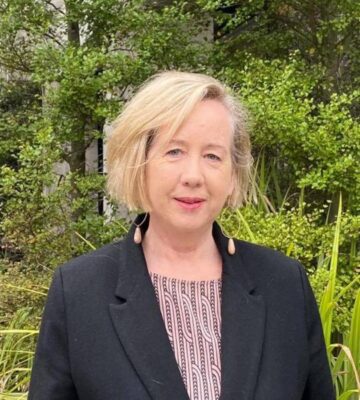This editorial is part of a special topic in the Video Journal of Education and Pedagogy on ‘Visual Ethics,’ edited by the authors.
1 Re/sponse-able Visual Ethics
The strategic deployment of a dash and a hyphen on the word ‘responsible’ and its yolking to the concept of ‘visual ethics’ in the special topic that underscores this editorial is much more than a mere play on words. It signifies a complex move in the field of research ethics away from a ‘one-size-fits-all’ approach to visual ‘data’ towards a series of sophisticated engagements with all things visual in the representations, curations and interpretations of learning (and, by association, learners). In this turn, we call to account the seen and the unseen, the spoken and the silenced, and the (im)possible harnessing of thought and/or practice. We are grateful to Sean Sturm (in Peters et al., 2020) for bringing the notion of re-sponsibility to mind in calling for this shift, advancing assemblages as a means of seeing what has hitherto been silenced as a consequence. However, we go a step further here by creating a break between ‘response’ and ‘ability.’ In doing so, we wish to argue for a set of ‘abilities’ that call for a certain ‘response,’ and vice versa – we consider that such couplings (and de-couplings) underscore the importance of visual ethics both now and into the future across educational research, practice and, indeed, pedagogy.
2 Locating Visual Ethics
In doing so, we contend that – given the postdigital worlds we now share (Jandric et al., 2018) – we can no longer continue to view visual information as a supplement to text, or a means of validating truth for that matter, since visualities are ubiquitous in the lives of learners in and across societies (Peters & White, 2021). They travel across (cyber)spaces and morph into diverse forms of expressions and subsequent interpretations. They are manipulated, entertained and produced in the hands of the many, and, in light of recent technologies, in ways that collapse what we once viewed as ‘real’ (as opposed to virtual). In such treatments, there are opportunities that exist alongside threats, creativities juxtaposed with narrowings, and, in the absence of visual literacies, an uncompromising return to ‘camera obscura’ as a source of all meaning. Such tensions – further unleashed in digital spaces of the metaverse and altmetrics – call for new forms of aesthetics and accountability across research and practice alike.
In the service of learning, the application of visual information as a source of learning (and evidence) has never held the elevated, perhaps even usurping, status it does today. Over the past few years, exacerbated during COVID-19, we have seen the rise of video in classroom practice as never before. As a consequence, students and teachers alike – all over the world – are now at an evolutionary stage where they can co-produce movies within hours utilising the technologies at hand, consuming (and manipulating) vast amounts of visual information that is now accessible to them from across the globe at the touch of a button. Video is particularly now viewed as a means of supplementing and, in many cases, replacing traditional forms of pedagogy. As a consequence, practices are visible in ways than ever before, even producing new kinds of pedagogical effects and consequences through the modalities and technologies at hand.
Likewise, educational researchers are making similar moves. In our analysis, there appear to be two different pathways produced as a consequence. The first holds a traditional ground that presents video or image as ‘data’ – seeking to validate or embellish claims that are made. The second takes a more artistic view – curating images as a means of conveying, promoting or representing ideas. Elsewhere, White (2020) has argued that neither route can be contemplated without ethical proclamations of their limits and possibilities, for ‘… while methodologies can be traced in terms of their orientation in order to understand how things got to be how they are … so, too, can ethical approaches’ (p. 19). If we accept this view, we must also accept the accountabilities that accompany any image or its manipulation(s) – whether they are implied, declared or discursively placed. In all cases, we can no longer settle with the old saying ‘a picture paints a thousand words’ when that picture (or video) is not aligned to a certain allegiance, treatment or intention in terms of how it might be ‘seen.’ This is both a rhetorical as well as an ethical proposition.
However, it is also an axiological proposition that weaves together ethics and aesthetics. Visual ethics cannot remain locked within the realm of pure ontologies and epistemologies. The serious consideration of visual ethics demands a point of departure from traditional views and practices concerning ethics. What we suggest here is a new approach to theorising and performing re/sponse-able visual ethics as a way to activate Western philosophy and to re-think what role axiology may play in the current world driven by visuals. In axiological studies, whether we look East or West, it is impossible to separate ethics and aesthetics in axiological thinking (Peters et al., 2022). Through that lens of re/sponse-able visual ethics, we may be able to open up a much-needed debate about indigenous matters and concerns around social justice and equity. This is visible through both a theoretical idea but also becomes very much a question of practice. We are thereby called to account concerning questions such as:
- What (if any) language do we use to accompany/account/eliminate/illustrate the image?
- What (if anything) constitutes an original contribution?
- What is fair, and for whom?
- What meanings do we grant to the notion of ‘care,’ and what might this look like?
- How can we account for our image-inings?
These and other related questions, fuelled by the philosophical nature of axiology, do yet have very real and practical implications and become critical in the way we theorise and perform visual ethics.
3 Shaping Direction(s)
But how to navigate this complex terrain? Philosophy as a method provides a direction for shaping our re/sponse-abilities to Visual Ethics. As Tesar (2021) argues: ‘Philosophy as a method allows for multiplicities and nonsingular conceptualisations and performances of philosophical issues, fostering an ability to think the unthinkable, to think with temporalities and space, and to allow the notions of continuous thinking and doing philosophy to occur. Philosophy as a method is ontological, epistemological and ethical relationship with a thought’ (p. 545). As such, visual ethics through such a lens – where axiology is an ethical relationship with a thought – can challenge established ways of how we perceive ethics, where we are encouraged to question every ontology of our ethical encounter, where our thoughts and practices uproot established epistemes. In such an approach, we cannot subscribe to one paradigm, one ethics, or one aesthetic. Through this approach, taking axiology seriously and thinking with philosophy as a method, asking the right question becomes more important than seeking answers, something that we already know matters in educational visual research too. In doing so, we are called to create space between the seeing, the seen and the sayings – calling ourselves to account for the spaces in between and the consequences of such renderings.
To be re/sponse-able in visual spaces concerning education is, therefore, much more than following a set of generic rules. Yet we cannot remove ourselves from their omnipresence and accountability in our efforts. This precarious positioning behoves researchers and pedagogues alike to be vigilant to the nuances of representation and its strategic orientation, and the dangers that lurk therein. As such being visually ethical requires thought as well as action and calls for increased vigilance on the part of producers and users alike. Rather than blind obedience to the rules of encounter, we invite robust dialogues about what is seen and the associated claims that are discursively advanced or silenced. There are tensions to be contemplated and rights to be entertained: by whom, for whom and in whose ‘best interests’ these may serve. While we posit a special case in the interests of vulnerable communities, we are cautious to point out that, here, too, there are robust conversations to be had before viewings are forbidden or trivialised (White, 2017).
Visual research undoubtedly presents an additional range of ethical considerations for researchers and Human Research Ethics committees (HRECs)/Institutional Review Boards (IRBs), with a series of well-established statutes to orient their judgements. When reviewing research ethics applications involving video or image-based data, for instance, HRECs are likely to ask, ‘will the use of this data directly inform and support the achievement of the research aims?’ Researchers using video typically need to inform potential participants about
- The purpose and use of video within research.
- What will happen to the recording during and after the research? This includes secure storage procedures as well as details about who will be viewing the video (e.g., research team members or is there any intention to present to wider audiences?)
- Any options to take part without being recorded.
- Options for participants to choose to have their appearance altered (e.g., face blurred) so their identity remains unknown to viewers. Or, conversely, declarations that clearly state anonymity cannot be assured.
- Can participants view recordings before providing consent for these to be used for publication purposes? If not, why not? If so, how?
Researchers should aim to demonstrate awareness and consideration about the potential implications of the publication of video data. For example, the provision of guarantees that video won’t be shared widely considering the proliferation of recording devices and online file-sharing platforms. It may be prudent to inform participants clearly about this risk, especially if the image-based data is to be shared in public forums (e.g., conference or lecture presentations). Researchers should clearly inform participants about steps being taken to protect unintended copying or distribution of image files – along with a caveat that even with these steps being taken, guarantees may be unable to be made.
Video-based research involving young children or vulnerable groups or participants interacting with third parties not involved in research presents further layers of complexity and opportunities for reflexivity by researchers. Internationally, research using video of infants and young children is challenging researchers and HRECs (Rutanen et al., 2018; White, 2017, 2021). As a minimum requirement, parents or legal guardians are needed to provide informed consent for children to take part. Wherever possible and appropriate, children should be fully informed about all aspects of the research (in a language and communication modality that they can understand) and their assent sought and received before commencing research activities (Mayne et al., 2016). Ethical research practices include revisiting consent with children and other groups at regular intervals during longitudinal projects.
No such ethical assurances are required in visual pedagogies beyond the academy, yet the ethical challenges in working with visualities in and outside of classrooms, and in cyberspace, have never been more pressing (White, 2017). Here, ethical vigilance is not only essential but exceeds these parameters in acts of cognition of the image that ‘want to encircle it from every side, to cut it off from unfinalisedness and, consequently, from freedom’ (Bakhtin, 1993, p. 24). In this regard, critical literacies have never been more necessary in order to equip teachers and learners alike with the necessary re/sponse-abilities to engage as co-consumers and co-producers in these slippery visual worlds. In this regard, we are all held to account for our selected seeings as well as our sayings when they are shared with and for others in and outside of our own epoch. There is much to be contemplated in these increasingly now public spaces and in consideration of their complex renderings as a consequence.
4 Adding Dots to Our Claim
We started this editorial with a dash and a hyphen to bring the spotlight back on visual ethics and the need to theorise and perform the complexities of sophisticated engagements that re/sponse-able visual ethics carry. In the VJEP video articles that accompany this editorial, the authors explore these across contemporary fields of film and gaming – posing unanswer(able?) questions about representation and engagement. These contributions were part of the Visual Ethics Summit we held in New Zealand in April 2022, where we invited a series of provocations across diverse educational domains. At this event, the debates were lively and animated – and highlighted the importance of this topic for educational thought and practice. We are even more convinced, as a consequence of these engagements, that these debates are more needed than ever before.
As we think through diverse and rapidly changing visual practices across educational research and pedagogy, we know that contradictions will necessarily arise and that academic conflicts in relation to ethical visual research (versus pedagogy) will continue. In no way do we wish to silence these or harness them in any way. Rather, we offer a fresh reconceptualisation of what the future of these debates may be and offer a promising way forward accordingly. While we can never predict what lies ahead or perhaps even imagine the challenges that lie ahead, we see the future lies in dialogues and debates across philosophical (methodological, axiological) thought, across practice-oriented (pedagogy and related fields such as art, film and technology), that hold us as always accountable to ‘others’ (human and non-human alike) as well as ourselves. We know that this is just the beginning of a much larger project on what re/sponse-able visual ethics are and could be in our educational research and practice – both for ourselves and the visual representations we bring to learners and in contemplation of the students with whom we visualise with, for and about. Therefore, we end this editorial by adding a few dots to our punctuative claim, thus denoting the future of re/sponse-able visual ethics … – in spaces yet, if ever, to be fully known yet worth our most earnest effort in thought and practice.
Acknowledgements
The authors of this editorial would like to thank the University of Canterbury for hosting, and the AVP and PESA for funding, the Visual Ethics Summit in April 2022. The AVP seminar series from which it emerged is available at www.visualpedagogies.com/2022-seminar-series.
White, J., Sutherland, D., & Tesar, M. (2023). Re/sponse-able visual ethics for education: Editorial. Video Journal of Education and Pedagogy. (Advance online publication). https://doi.org/10.1163/23644583-08010001





